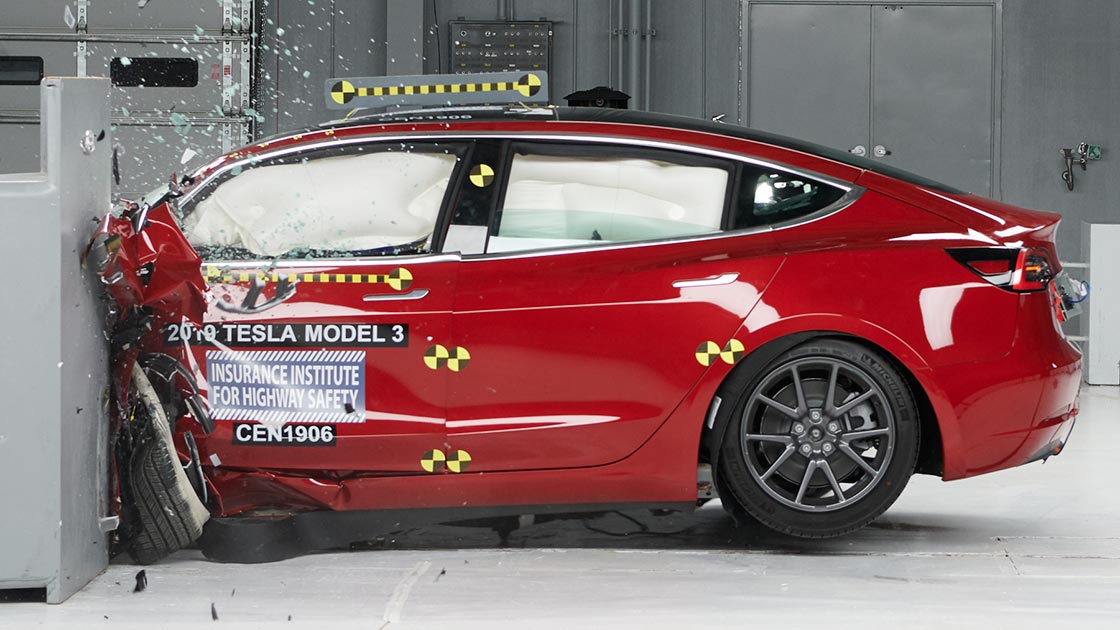
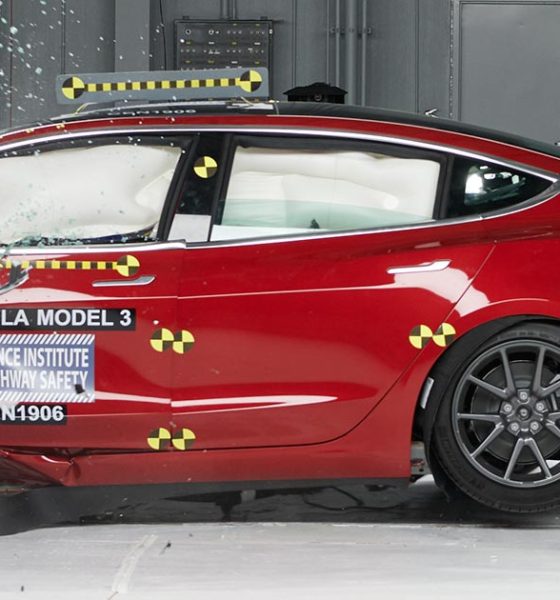
News
Tesla and its peers are proving that EVs are inherently safer than combustion cars
An analysis of insurance data in the United States has shown that injury claims are notably less common among all-electric vehicles like the Tesla Model 3 and its peers. The findings were shared by the Insurance Institute for Highway Safety (IIHS) in a recent report, which followed the release of its safety ratings for the 2021 Volvo XC40 Recharge and the Ford Mustang Mach-E.
The XC40 Recharge and the Mustang Mach-E were able to secure high rankings in the IIHS’ stringent safety tests, with the former receiving a Top Safety Pick+ award and the latter receiving a lower but still impressive Top Safety Pick rating. Other all-electric vehicles, most notably the Tesla Model 3, the Audi e-tron, and the Audi e-tron Sportback, have qualified for the 2021 Top Safety Pick+ award.

Interestingly enough, the release of the XC40 Recharge and Mach-E’s stay ratings coincided with a recent study of insurance losses for electric vehicles by the IIHS-affiliated Highway Loss Data Institute. The study looked at electric and conventional versions of nine vehicles produced from 2011 and 2019, and it examined collision, property damage liability, and injury claims.
As per the study’s findings, the rates of injury claims related to drivers and passengers of electric vehicles were over 40% lower compared to their internal combustion-powered counterparts over 2011-2019. The IIHS notes that these results were quite similar to the findings of an earlier study from the Highway Loss Data Institute (HLDI) that focused on hybrid cars, which pointed out that the lower injury rates may be due to the weight of the vehicles’ batteries.
As per the HLDI, the large batteries used in hybrids make vehicles substantially heavier than conventional cars. Occupants of heavier vehicles are exposed to lower forces in multi-vehicle crashes. Matt Moore, HLDI vice president, explained these findings in a statement. “Weight is a big factor. Hybrids on average are 10% heavier than their standard counterparts. This extra mass gives them an advantage in crashes that their conventional twins don’t have,” he said.
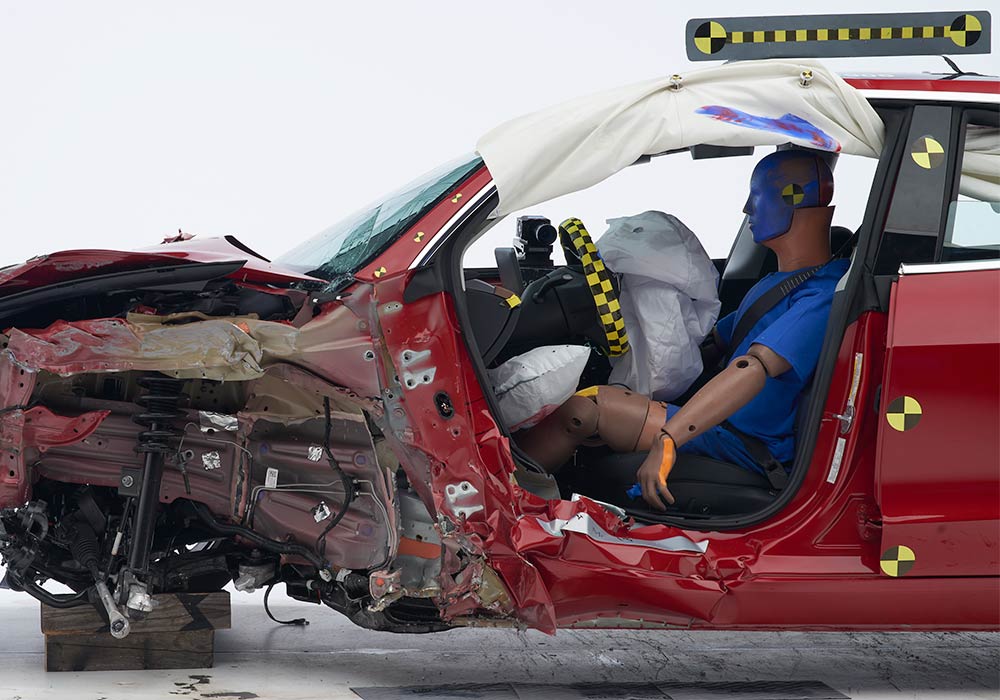
This weight advantage is even more notable in all-electric cars like the Tesla Model 3, on account of their substantially larger battery packs. This was true for the XC40 Recharge, which features a curb weight of 4,787 lbs, which is significantly heavier than the 3,811 lbs of its combustion-powered counterpart. Even the Mach-E, which is an all-electric model, is quite hefty at 4,516 lbs.
IIHS President David Harkey is quite optimistic about the study’s findings. In a statement, he noted that the study further proves that all-electric cars are as safe or even safer than conventional vehicles. This means that a transition to sustainable vehicles would likely not require as many compromises on the part of consumers. “It’s fantastic to see more proof that these vehicles are as safe as or safer than gasoline- and diesel-powered cars. We can now say with confidence that making the U.S. fleet more environmentally friendly doesn’t require any compromises in terms of safety,” he said.
Don’t hesitate to contact us for news tips. Just send a message to tips@teslarati.com to give us a heads up.

News
Tesla is not sparing any expense in ensuring the Cybercab is safe
Images shared by the longtime watcher showed 16 Cybercab prototypes parked near Giga Texas’ dedicated crash test facility.
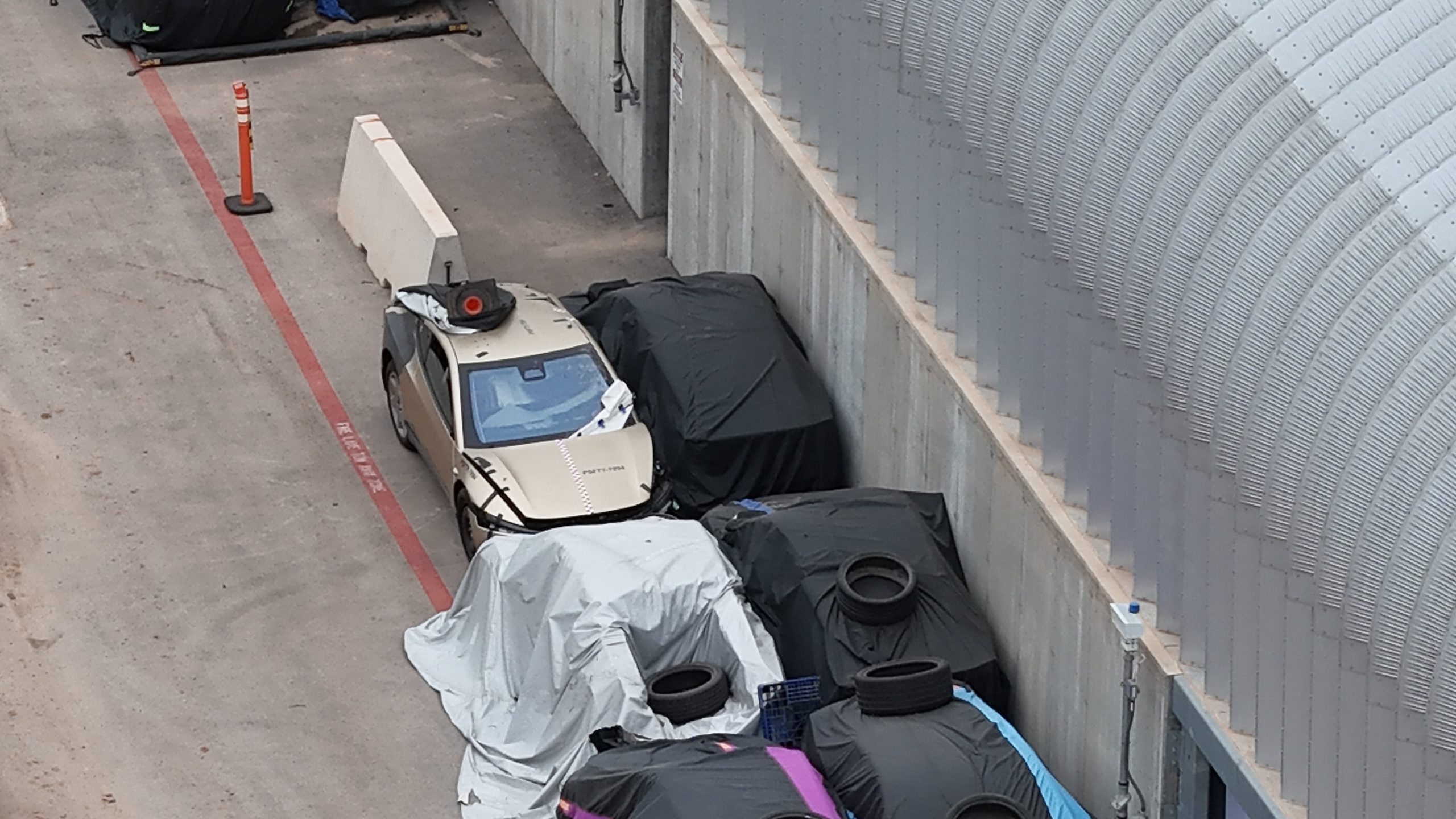
The Tesla Cybercab could very well be the safest taxi on the road when it is released and deployed for public use. This was, at least, hinted at by the intensive safety tests that Tesla seems to be putting the autonomous two-seater through at its Giga Texas crash test facility.
Intensive crash tests
As per recent images from longtime Giga Texas watcher and drone operator Joe Tegtmeyer, Tesla seems to be very busy crash testing Cybercab units. Images shared by the longtime watcher showed 16 Cybercab prototypes parked near Giga Texas’ dedicated crash test facility just before the holidays.
Tegtmeyer’s aerial photos showed the prototypes clustered outside the factory’s testing building. Some uncovered Cybercabs showed notable damage and one even had its airbags engaged. With Cybercab production expected to start in about 130 days, it appears that Tesla is very busy ensuring that its autonomous two-seater ends up becoming the safest taxi on public roads.
Prioritizing safety
With no human driver controls, the Cybercab demands exceptional active and passive safety systems to protect occupants in any scenario. Considering Tesla’s reputation, it is then understandable that the company seems to be sparing no expense in ensuring that the Cybercab is as safe as possible.
Tesla’s focus on safety was recently highlighted when the Cybertruck achieved a Top Safety Pick+ rating from the Insurance Institute for Highway Safety (IIHS). This was a notable victory for the Cybertruck as critics have long claimed that the vehicle will be one of, if not the, most unsafe truck on the road due to its appearance. The vehicle’s Top Safety Pick+ rating, if any, simply proved that Tesla never neglects to make its cars as safe as possible, and that definitely includes the Cybercab.
Elon Musk
Tesla’s Elon Musk gives timeframe for FSD’s release in UAE
Provided that Musk’s timeframe proves accurate, FSD would be able to start saturating the Middle East, starting with the UAE, next year.
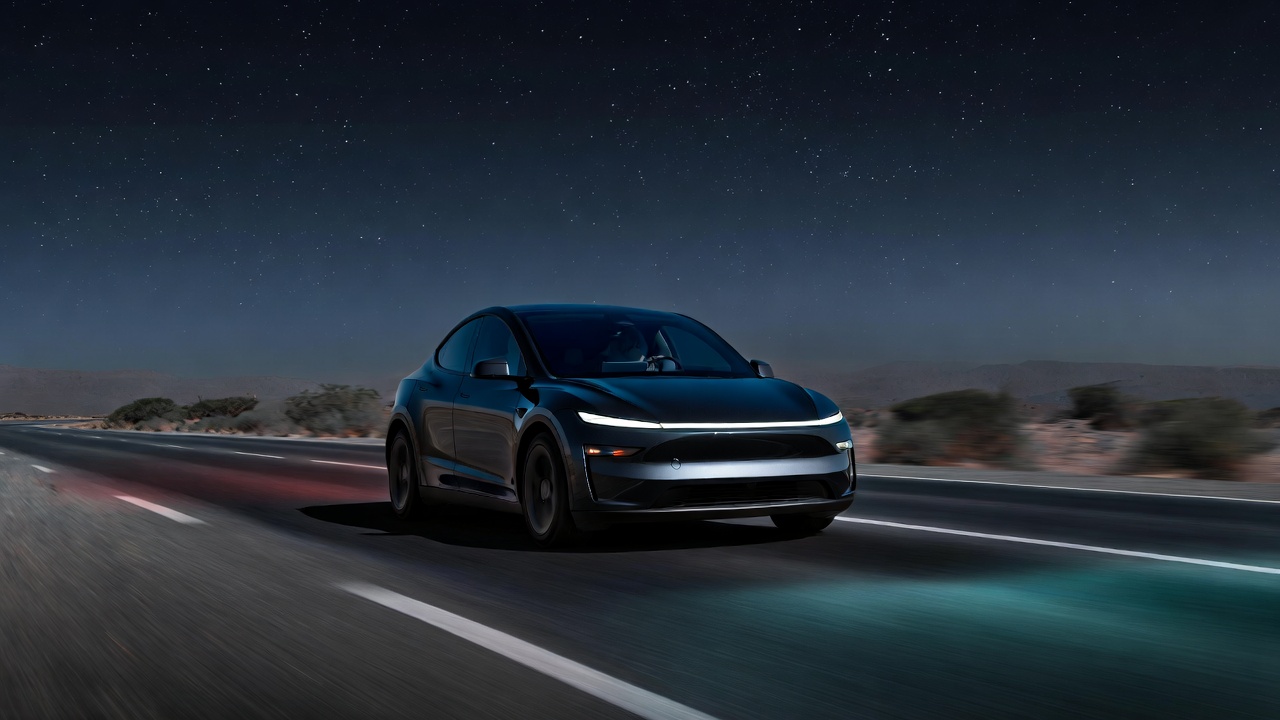
Tesla CEO Elon Musk stated on Monday that Full Self-Driving (Supervised) could launch in the United Arab Emirates (UAE) as soon as January 2026.
Provided that Musk’s timeframe proves accurate, FSD would be able to start saturating the Middle East, starting with the UAE, next year.
Musk’s estimate
In a post on X, UAE-based political analyst Ahmed Sharif Al Amiri asked Musk when FSD would arrive in the country, quoting an earlier post where the CEO encouraged users to try out FSD for themselves. Musk responded directly to the analyst’s inquiry.
“Hopefully, next month,” Musk wrote. The exchange attracted a lot of attention, with numerous X users sharing their excitement at the idea of FSD being brought to a new country. FSD (Supervised), after all, would likely allow hands-off highway driving, urban navigation, and parking under driver oversight in traffic-heavy cities such as Dubai and Abu Dhabi.
Musk’s comments about FSD’s arrival in the UAE were posted following his visit to the Middle Eastern country. Over the weekend, images were shared online of Musk meeting with UAE Defense Minister, Deputy Prime Minister, and Dubai Crown Prince HH Sheikh Hamdan bin Mohammed. Musk also posted a supportive message about the country, posting “UAE rocks!” on X.
FSD recognition
FSD has been getting quite a lot of support from foreign media outlets. FSD (Supervised) earned high marks from Germany’s largest car magazine, Auto Bild, during a test in Berlin’s challenging urban environment. The demonstration highlighted the system’s ability to handle dense traffic, construction sites, pedestrian crossings, and narrow streets with smooth, confident decision-making.
Journalist Robin Hornig was particularly struck by FSD’s superior perception and tireless attention, stating: “Tesla FSD Supervised sees more than I do. It doesn’t get distracted and never gets tired. I like to think I’m a good driver, but I can’t match this system’s all-around vision. It’s at its best when both work together: my experience and the Tesla’s constant attention.” Only one intervention was needed when the system misread a route, showcasing its maturity while relying on vision-only sensors and over-the-air learning.
News
Tesla quietly flexes FSD’s reliability amid Waymo blackout in San Francisco
“Tesla Robotaxis were unaffected by the SF power outage,” Musk wrote in his post.

Tesla highlighted its Full Self-Driving (Supervised) system’s robustness this week by sharing dashcam footage of a vehicle in FSD navigating pitch-black San Francisco streets during the city’s widespread power outage.
While Waymo’s robotaxis stalled and caused traffic jams, Tesla’s vision-only approach kept operating seamlessly without remote intervention. Elon Musk amplified the clip, highlighting the contrast between the two systems.
Tesla FSD handles total darkness
The @Tesla_AI account posted a video from a Model Y operating on FSD during San Francisco’s blackout. As could be seen in the video, streetlights, traffic signals, and surrounding illumination were completely out, but the vehicle drove confidently and cautiously, just like a proficient human driver.
Musk reposted the clip, adding context to reports of Waymo vehicles struggling in the same conditions. “Tesla Robotaxis were unaffected by the SF power outage,” Musk wrote in his post.
Musk and the Tesla AI team’s posts highlight the idea that FSD operates a lot like any experienced human driver. Since the system does not rely on a variety of sensors and a complicated symphony of factors, vehicles could technically navigate challenging circumstances as they emerge. This definitely seemed to be the case in San Francisco.
Waymo’s blackout struggles
Waymo faced scrutiny after multiple self-driving Jaguar I-PACE taxis stopped functioning during the blackout, blocking lanes, causing traffic jams, and requiring manual retrieval. Videos shared during the power outage showed fleets of Waymo vehicles just stopping in the middle of the road, seemingly confused about what to do when the lights go out.
In a comment, Waymo stated that its vehicles treat nonfunctional signals as four-way stops, but “the sheer scale of the outage led to instances where vehicles remained stationary longer than usual to confirm the state of the affected intersections. This contributed to traffic friction during the height of the congestion.”
A company spokesperson also shared some thoughts about the incidents. “Yesterday’s power outage was a widespread event that caused gridlock across San Francisco, with non-functioning traffic signals and transit disruptions. While the failure of the utility infrastructure was significant, we are committed to ensuring our technology adjusts to traffic flow during such events,” the Waymo spokesperson stated, adding that it is “focused on rapidly integrating the lessons learned from this event, and are committed to earning and maintaining the trust of the communities we serve every day.”








